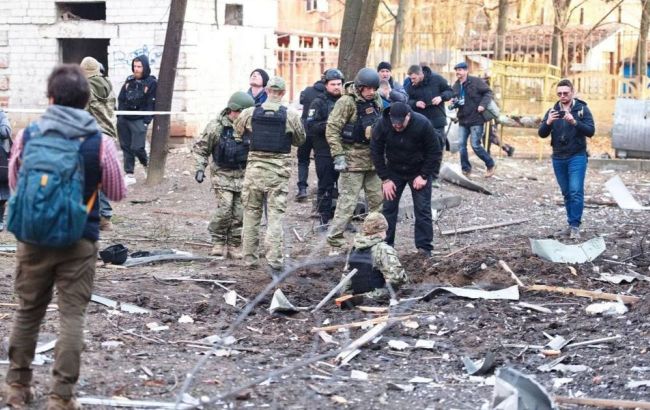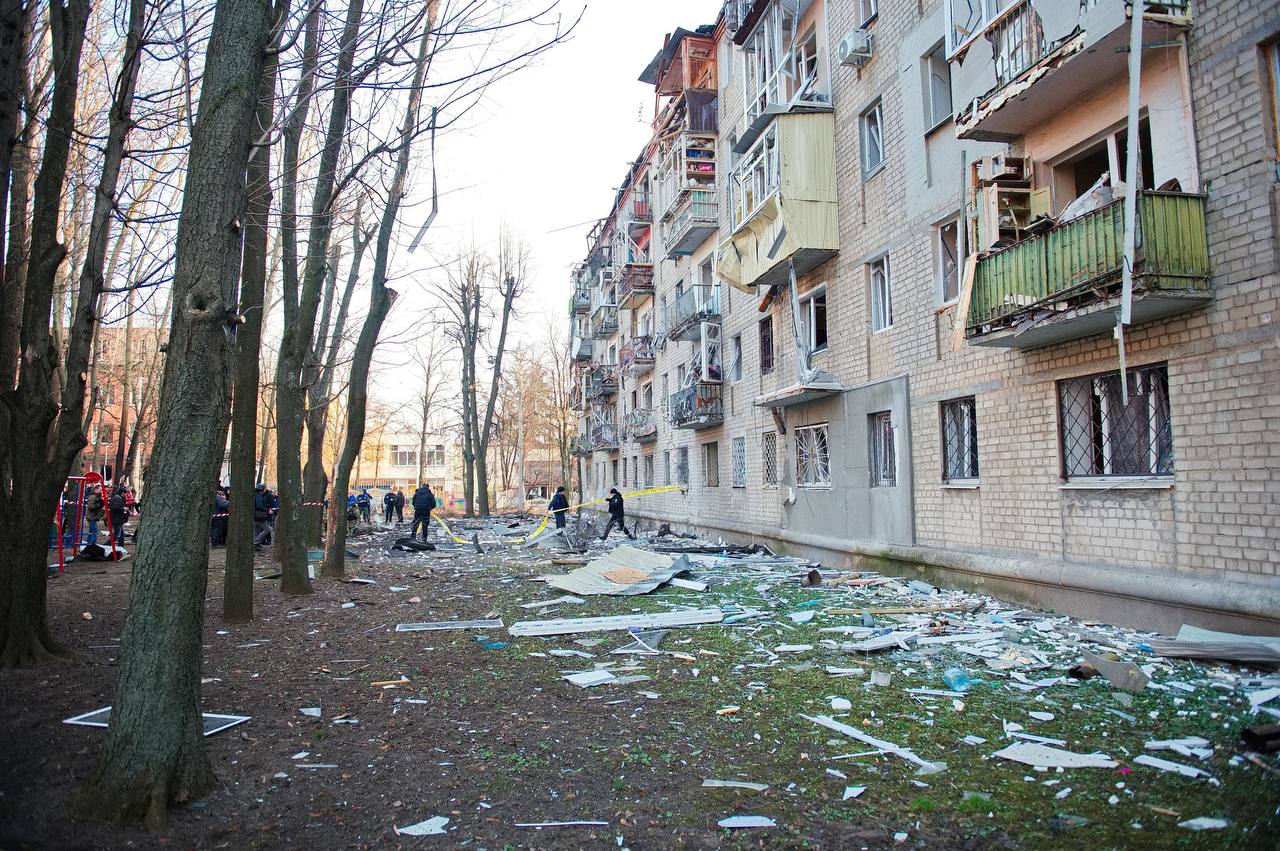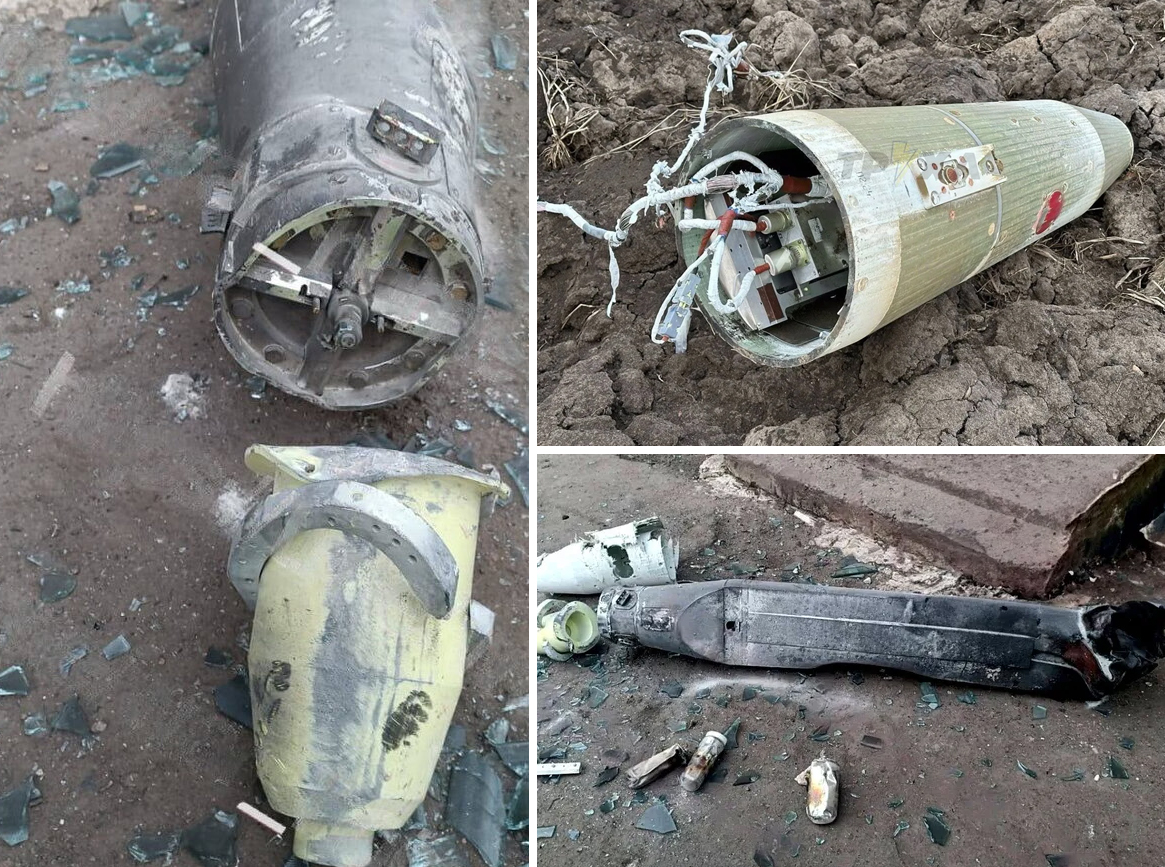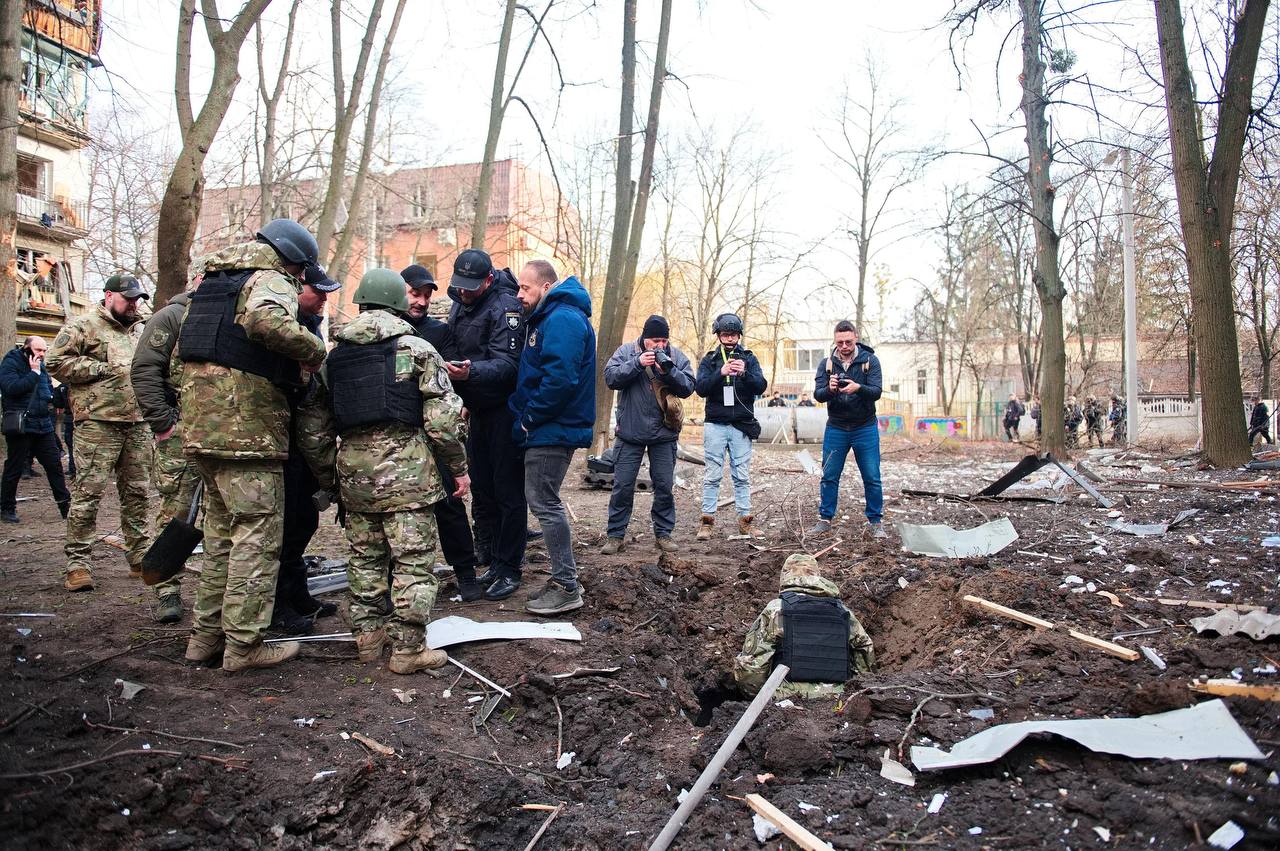Cheap and dangerous. What are UMPB bombs that Russia struck Kharkiv with
 Photo: Landing site of the UMPB bomb in Kharkiv (t.me/synegubov)
Photo: Landing site of the UMPB bomb in Kharkiv (t.me/synegubov)
This week, the Russian army attacked Kharkiv with the latest UMPB D-30 (Unified Multi-Purpose Gliding Bombs) munitions. The strike hit a residential area, resulting in damage to buildings, one fatality, and nearly 20 injuries.
RBС-Ukraine has compiled the key information about the new Russian bomb.
The material was prepared using analysis from the Institute for the Study of War (ISW), statements from Oleh Syniehubov, Chief of the Kharkiv Regional Military Administration, Serhii Bolvinov, Deputy Chief of the Regional Police, Dmytro Lykhoviy, Speaker of the Defense Forces of the Tavria Direction, Illia Yevlash, Speaker of the Air Force, publications from Defense Express and The War Zone, as well as commentary from expert Oleksii Hetman.
Contents
- Kharkiv and beyond: Where UMPB D-30 missiles have already landed
- How the UMPB appeared and what are the likely characteristics
- Why this is bad news for Ukraine
- How to fight against UMPBs and what F-16 aircraft have to do with it
Kharkiv and beyond: Where UMPB D-30 missiles have already landed
On Wednesday, March 27, at around 3:50 p.m., Russian forces struck twice in the Shevchenkivskyi district of Kharkiv. There were reports of damage to several five-story buildings and an emergency surgery institute. One of the bombs exploded on a children's playground, blowing off facades and balconies in neighboring buildings with the force of the explosion.
Overall, at least 14 high-rise buildings, a school, a kindergarten, a hospital, and other infrastructure were damaged. According to the Kharkiv Regional Military Administration, a 59-year-old man was killed. Another 19 people were injured, including children, including a three-month-old baby.

Photo: Aftermath of the UMPB strike in Kharkiv (t.me/synegubov)
The Prosecutor's Office has initiated an investigation into the violation of laws and customs of war combined with intentional murder (part 2 of article 438 of the Criminal Code of Ukraine). According to preliminary data, the strike was carried out using two Unified Multi-Purpose Gliding Bombs (UMPB D-30).
"This is the first case when the armed forces of Russia have used such type of ammunition against the city. The munitions were dropped from an aircraft," the statement read.
According to the deputy chief of the regional police, Serhii Bolvinov, the second strike targeted a school. He also described the UMPB D-30SN as cheap analogs of guided missiles, made based on the aviation bomb FAB-250. The bombing was the first for Kharkiv since 2022.
UMPB D-30SN is the latest weapon used since at least the first decade of March when three strikes were recorded in Myrnohrad (the Donetsk region). As Dmytro Lykhoviy, the spokesman for the Defense Forces of the Tavriya direction, stated, these are improved versions of guided aerial bombs. The use of bombs with additional planning and power features indicates a new stage in the development of Russian guided aerial bombs.

Photo: aftermath of the strike in Mironohrad (t.me/VadimFilashkin_donoda)
On the eve, the occupiers once again used such munitions. Four bombs struck residential areas in the city of Mykolaiivka (the Donetsk region). There were reports of damage to 11 high-rise buildings and 11 private houses, as well as the death of a woman born in 1958.
How the UMPB appeared and what are the likely characteristics
Little is known about the parameters of the UMPB D-30SN. Essentially, it is only known that it is a projectile with an additional module installed with wings and control surfaces. This allows for gliding towards the target and adjusting the trajectory based on data from the navigation block.
Analysts at the Institute for the Study of War (ISW) have noted that as early as January, the Russians were using unguided glide bombs, but recently the so-called "Z-war correspondents" have begun writing about UMPBs. In particular, about their use and plans to equip them with rocket engines to achieve a range of 90 km.
"Russian forces are likely to attempt serial production of guided glide bombs UMPB and increase their use on the front lines," according to one of the March reports.
According to military expert Major of the Reserve of the Armed Forces of Ukraine, Oleksii Hetman, the Russians have many varieties of similar bombs.
"At first, there were old 'dumb' FABs - these are ordinary high-explosive aviation bombs. To make them fly further, the occupiers began using universal planning and correction modules UMPC. Then came the KAB guided bombs. It's the same as FAB, only there is a GPS-guided warhead. Thanks to this warhead, relatively accurate hitting of the target is ensured. As the Russians themselves write, the accuracy is 7-8 meters, but in practice, it turns out to be around 15," he explained in a comment to RBC-Ukraine.

Photo: remnants of the UMPB bomb (defence-ua.com)
Regarding UMPB, it is a new device that can be mounted on KAB, FAB, or other bombs. It may include a powder charge to achieve a range, reportedly up to 100-140 km from the launch site, according to unconfirmed data, added Hetman.
Oleh Syniehubov, the head of the Kharkiv Regional Military Administration, said that on Wednesday the enemy attacked from the Belgorod region, launching UMPBs towards Kharkiv from different directions - from the north and west - in an attempt to detect air defense systems. According to him, the launches were carried out from aircraft of the Su-type.
"It (the munition, - ed.) can completely cover the city of Kharkiv, any district. Even populated areas of the Kharkiv region, depending on the distance to the border from which the launch will take place," he added.
He also mentioned that the UMPB is already capable of attacking targets up to 90 km away, but the final information will be available after examination.
In its development, Russians were likely inspired by the American GBU-39 SDB bomb, writes Defense Express. However, while the GBU-39 is highly precise, the Russian counterpart currently demonstrates accuracy issues, especially in residential areas.
"All these Russian guided munitions, including glide bombs and others, have different levels of precision. But they are far from being highly accurate," noted Hetman.
The term inter-species means that the munition can be launched not only from frontline bombers like the Su-34 but also from the ground. That is, from systems of reactive volley fire like Smerch, Tornado, or Uragan.
As noted by the American portal The War Zone, launching from ground systems means that the Russians can increase the range of their missiles without the need to risk expensive tactical aircraft. Unlike guided bombs where the wings and guidance package are bolted on, the UMPB has a more "elegant design". Regarding its mass, there is no precise information. Some sources write that the munition is based on the unguided FAB-250 (total weight 250 kg) in a streamlined casing with deployable wings. Others suggest that the foundation is the KAB-250 with laser guidance.
The guidance system belongs to the Comet type, which uses both inertial and satellite navigation. It is used not only in guided bombs but also in the enhanced version of Iranian Shaheds. Combining satellite navigation with inertial navigation allows it to overcome obstacles from electronic warfare.
Why this is bad news for Ukraine
In theory, such a weapon is intended to target objectives along the front line without the need to employ expensive assets. In the context of prolonged intrusion, this may assist the Russian military machine, writes The War Zone.
As early as April 2023, the Ukrainian Air Force stated that the Russians were deploying glide bombs without entering the range of air defense systems. Since then, officials have repeatedly complained about the difficulty of intercepting these munitions. Given this, it is obvious that the use of UMPBs will only exacerbate the problem.

Photo: Aftermath of a UMPB bomb strike in Kharkiv (t.me/synegubov)
According to Oleksii Hetman, the munition was developed as an analog to the American GLSDB - a small-diameter ground-launched bomb used by Ukraine, launched from M270 and M142 HIMARS systems.
"It's certainly not a guided missile. The munition doesn't have those capabilities; it can't turn 180 degrees in flight like a guided missile. But it is capable of some maneuvering and trajectory adjustments," he noted.
Analysts at The War Zone emphasize that Russia's introduction of its small-diameter bomb is bad news in any case. This includes growing threats to Ukrainian air defense systems to a level not seen before.
Right now, the Russian army is turning the front-line regions of Ukraine into a testing ground for the UMPB D-30SN.
"They have started actively producing them. I think they are trying to compensate for the shortage of 152mm caliber artillery shells. Will they continue to use such bombs? Of course, they will. General Syrskyi (Commander-in-Chief of the Armed Forces of Ukraine) says the ratio is 1:6, meaning the occupiers fire six times more shells. But still, it's not enough because they stick to their tactics - destroy everything first, and then advance with ground forces. Will they launch many UMPBs? Unfortunately, the fact is that yes, they will launch many," added Hetman.
How to fight against UMPBs and what F-16 aircraft have to do with it
Using the UMPB D-30, the Russian aggressor is developing new methods of warfare against Ukraine. According to the spokesperson of the Air Forces, Illia Yevlash, the enemy is modifying bombs to terrorize peaceful cities.
"In that case (regarding the strike on Kharkiv, - ed.), there was a whole system so that this bomb could cover a larger distance than a regular bomb without such modification. Of course, they are experimenting with such methods of warfare," he said in a telethon broadcast.

Photo: Russian bomber Su-34 can be a carrier of UMPB (Getty Images)
He also noted that the Defense Forces can combat guided air bombs, but objectively, it is more feasible to shoot down the carriers - Su-34 and Su-35 aircraft.
"Eliminating the carrier will more effectively impact the use of this type of weaponry and, overall, the use of aircraft near the front line," he added.
Responding to the attack on March 27, President Volodymyr Zelenskyy emphasized that the only way to reduce the threat of repeat strikes is through strengthening air defense systems. He criticized Western partners, stating that "there are no rational explanations as to why Patriots, of which there are enough in the world, still do not cover the skies of Kharkiv." He also called the accelerated acquisition of multirole F-16 fighters a vital task.
According to Hetman, it is not necessary to deploy Patriots to the east, even if Ukraine receives them in larger quantities. Western model aircraft are entirely capable of preventing enemy aviation from reaching the launch threshold.
"Since Russian aircraft operate without entering the range of our air defense systems, we need F-16s to intercept them. Otherwise, when the bomb is already flying, intercepting it is practically impossible," he added.

